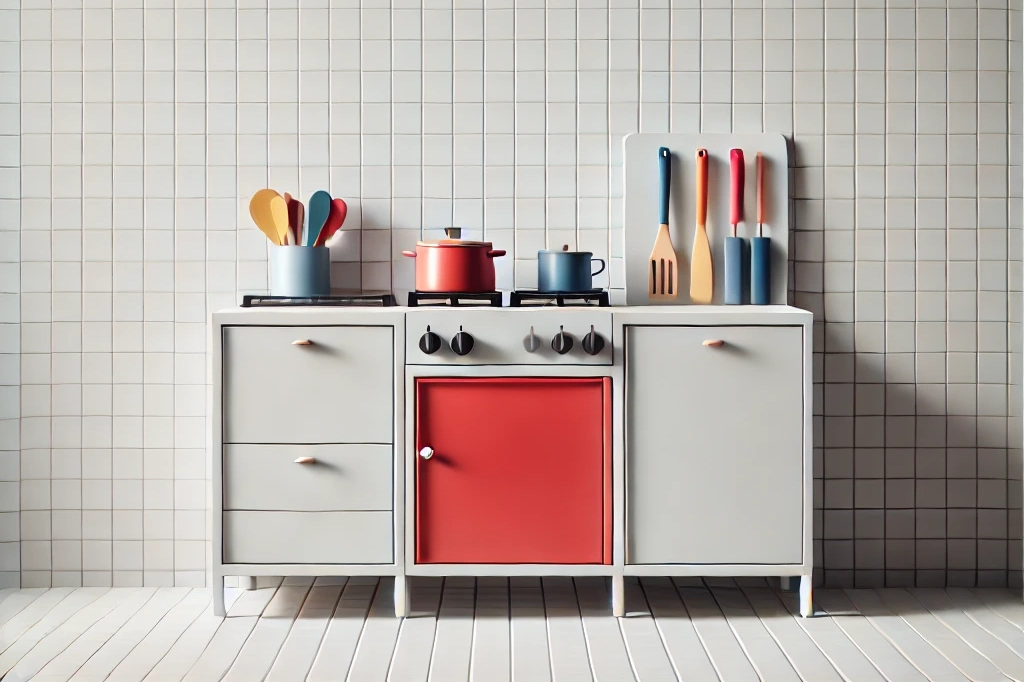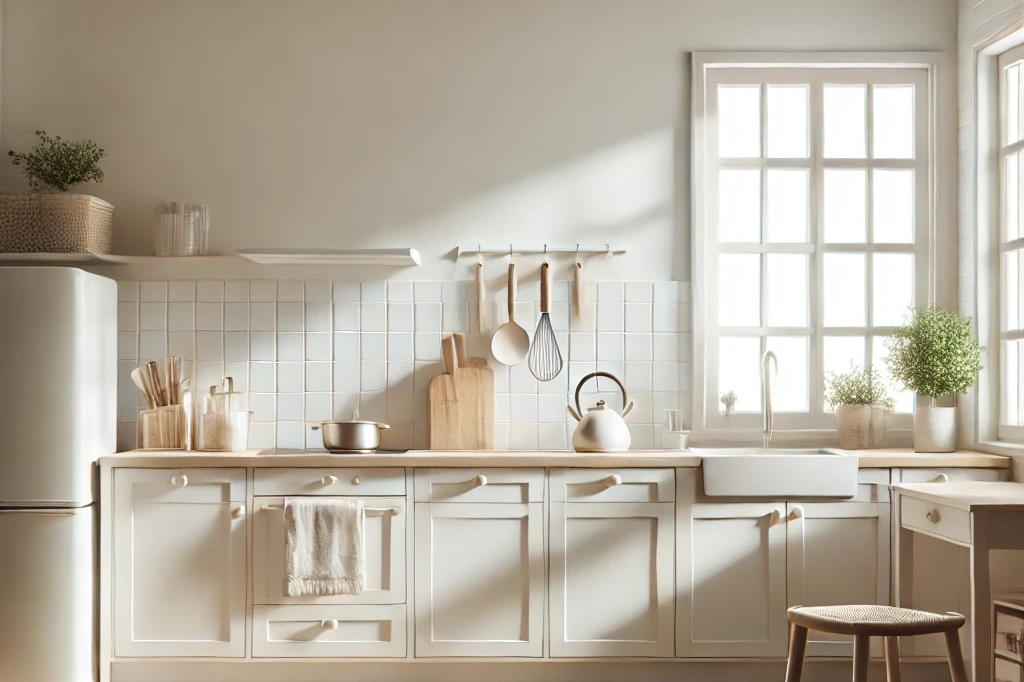
Cooking is one of the most important activities for many people. However, for those with low vision, the kitchen can present various challenges. From precise measurements to using hot utensils, these tasks require additional skills and tools to ensure safety and efficiency. In this article, we will explore several adaptation tips that can help individuals with low vision cook more confidently.
1. Use High Contrast Colors and Large Font Labels
When vision is limited, visual contrast can significantly enhance the visibility of certain tasks. Using contrasting colors is a vital low vision cooking adaptation technique that helps you easily identify kitchen items. For example, a black cutting board can be used for white vegetables, while a white cutting board can be used for dark ingredients. This contrast makes it easier to see the location of food. A 2023 study indicated that high-contrast color combinations significantly improve low-vision individuals’ ability to identify items in the kitchen, enhancing their operational accuracy and efficiency (Martinez & Brown, 2023).
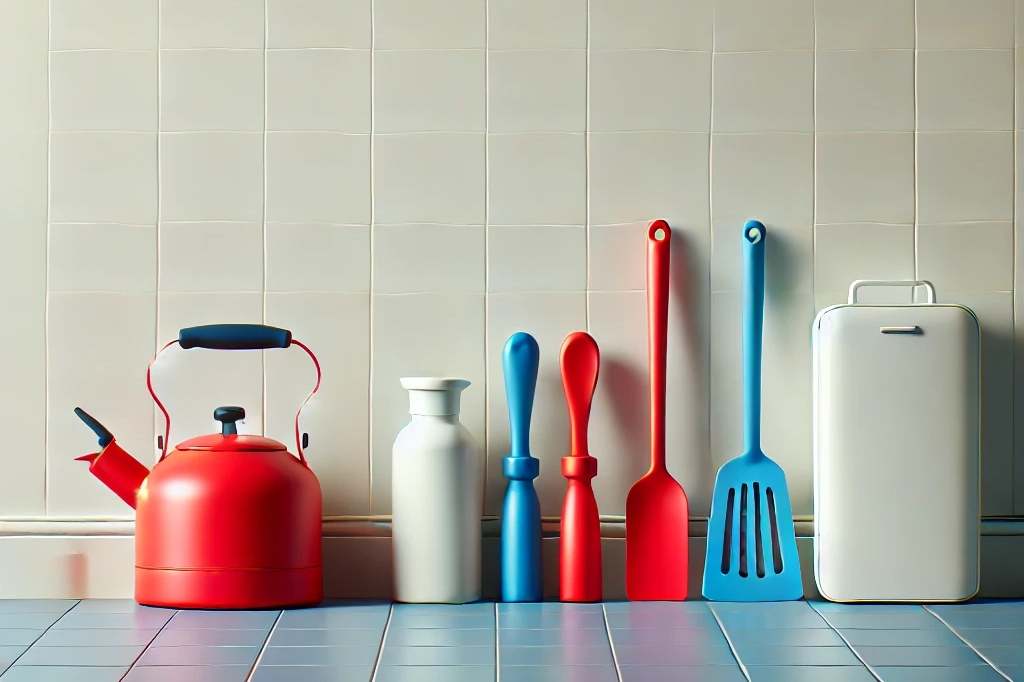 Additionally, labeling storage containers or spice jars with large-font labels is a great practice. Use bold black letters to mark spice names, or high-contrast color blocks or icons to assist with recognition. These simple visual adjustments can considerably reduce the hassle of searching for specific ingredients.
Additionally, labeling storage containers or spice jars with large-font labels is a great practice. Use bold black letters to mark spice names, or high-contrast color blocks or icons to assist with recognition. These simple visual adjustments can considerably reduce the hassle of searching for specific ingredients.
2. Utilize Tactile and Audio Assistive Tools
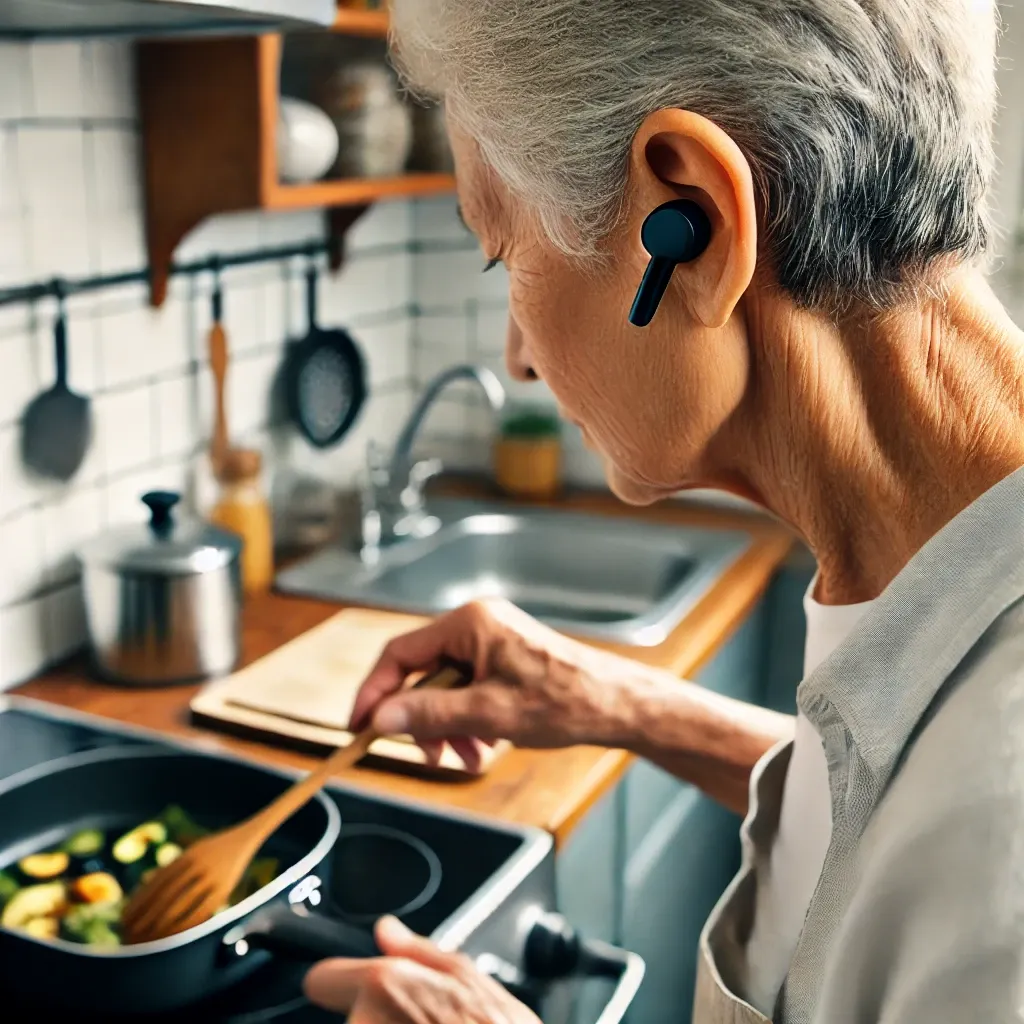
Tactile markers are another important tool for low vision cooking. Applying different shaped tactile stickers to stove and oven knobs can help you accurately adjust heat and temperature. By feeling these tactile markers, you can quickly find the right settings without relying on your sight.
Audio assistive tools are also valuable for low vision cooking. Recent research indicates that advanced audio and tactile assistive devices can enhance the kitchen independence and safety of low-vision individuals. These tools include voice weighing scales and tactile marking tools, which effectively reduce kitchen accidents (Kim & Lee, 2024). With these audio tools, you can hear weight or temperature information instead of needing to look at a display screen.
3. Organize Your Kitchen Space
A tidy and organized kitchen is crucial for low vision adaptation in cooking. Keeping countertops clean and ensuring that every item has a designated spot can significantly reduce confusion and potential hazards while cooking. For example, keep frequently used tools like knives and measuring cups within easy reach, away from hot surfaces and edges.
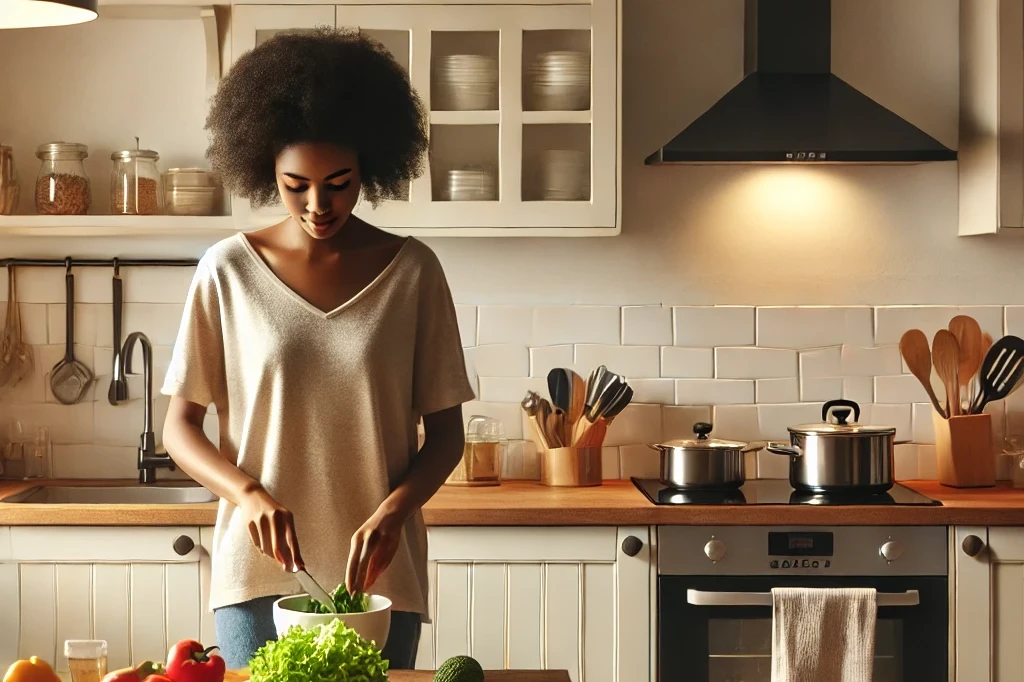
Categorizing items is a simple yet effective method, especially when using storage bins and dividers to maintain clear categories. Place all spices in one drawer and arrange them by frequency of use to minimize time spent searching for them. Additionally, storage bins can have tactile markers or large-font labels to facilitate identification.
4. Use Safe Cooking Tools
To ensure cooking safety, individuals with low vision can opt for specialized safety kitchen tools. For instance, using cut-resistant gloves can prevent accidental cuts while handling knives; using peelers with hand guards can also reduce risks when preparing vegetables.
Electric stoves and automatic shut-off rice cookers are safer than gas ranges, as they lower the risk of burns or fires. Moreover, some new cooking devices feature voice prompts that alert you when cooking is complete, allowing you to keep track of the cooking process without needing to see status indicator lights.
5. Prepare Ingredients in Advance to Simplify Cooking
Another effective method for low vision cooking adaptation is to prepare ingredients ahead of time. Before cooking, try to wash, cut, and categorize all ingredients, using bowls or plates with high-contrast colors to hold different types of food. This habit can make the entire cooking process more orderly and safe.
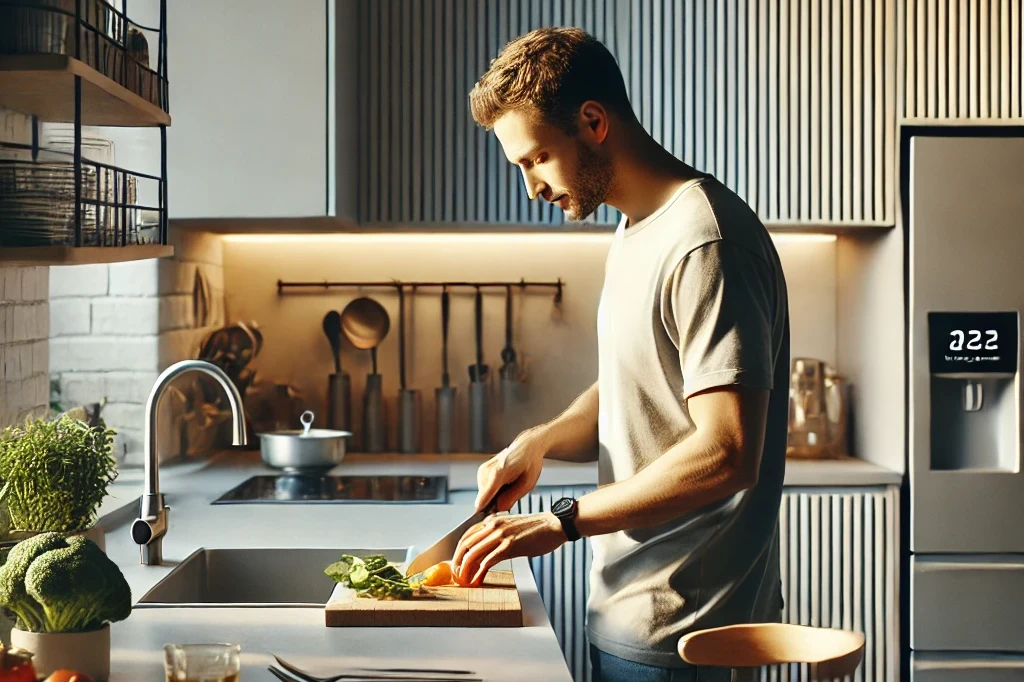
In addition to preparing ingredients in advance, consider using freezing techniques. For example, portioned and pre-cut vegetables can be stored in small bags in the freezer. This can reduce daily prep work and make the cooking process much easier.
6. Rely on Auditory and Olfactory Cues
For low vision individuals, many aspects of cooking can be aided through auditory and olfactory senses. For instance, the sound of boiling water can alert you to lower the heat when the water starts to boil. Similarly, changes in the aroma of certain foods can help you gauge the cooking state.
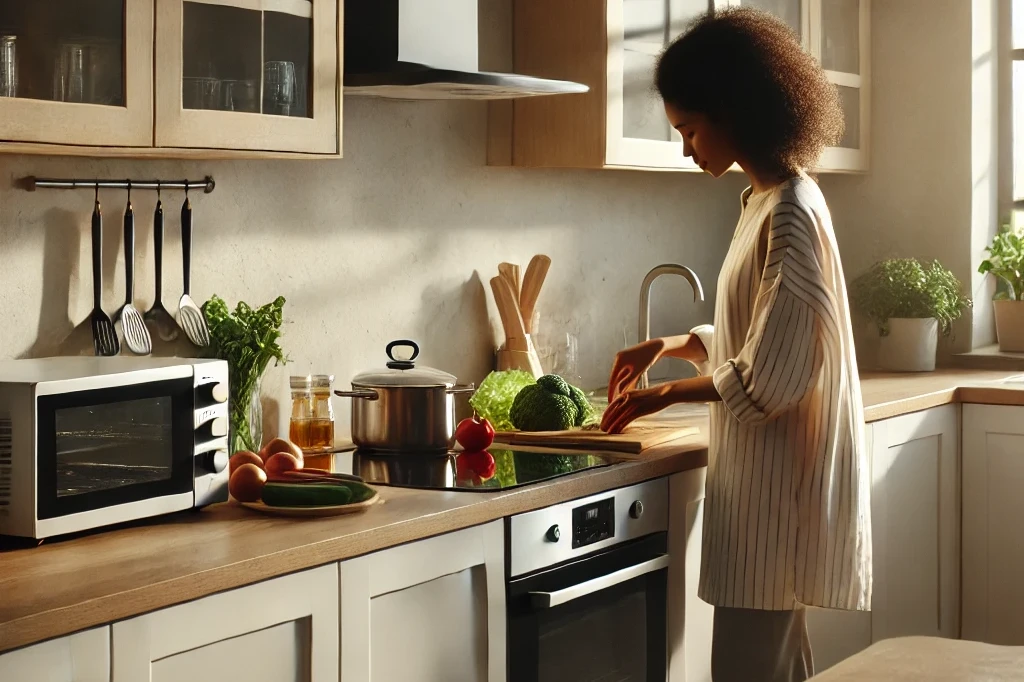
Try to stay attuned to these non-visual cues during cooking, developing your ability to judge the cooking progress through sound and smell, even when you cannot see the details clearly.
7. Use Smart Devices to Simplify Operations
With the rise of smart devices, cooking has become easier for individuals with low vision. Smart kitchen assistants, such as Amazon Alexa or Google Home, can help you set timers, read recipes, and even play cooking tutorials via voice commands. You can also set voice reminders, such as an alarm for five minutes later, to ensure you don’t miss any critical cooking steps. The inclusion of smart speakers or voice assistants not only modernizes your kitchen but also serves as an essential component of an accessible cooking environment.
Electronic magnifiers such as the Zoomax Luna 6 or Luna S are highly beneficial for individuals with low vision. These portable devices can easily be used in the kitchen to magnify recipe books, ingredient labels, or even cooking instructions on packaging.
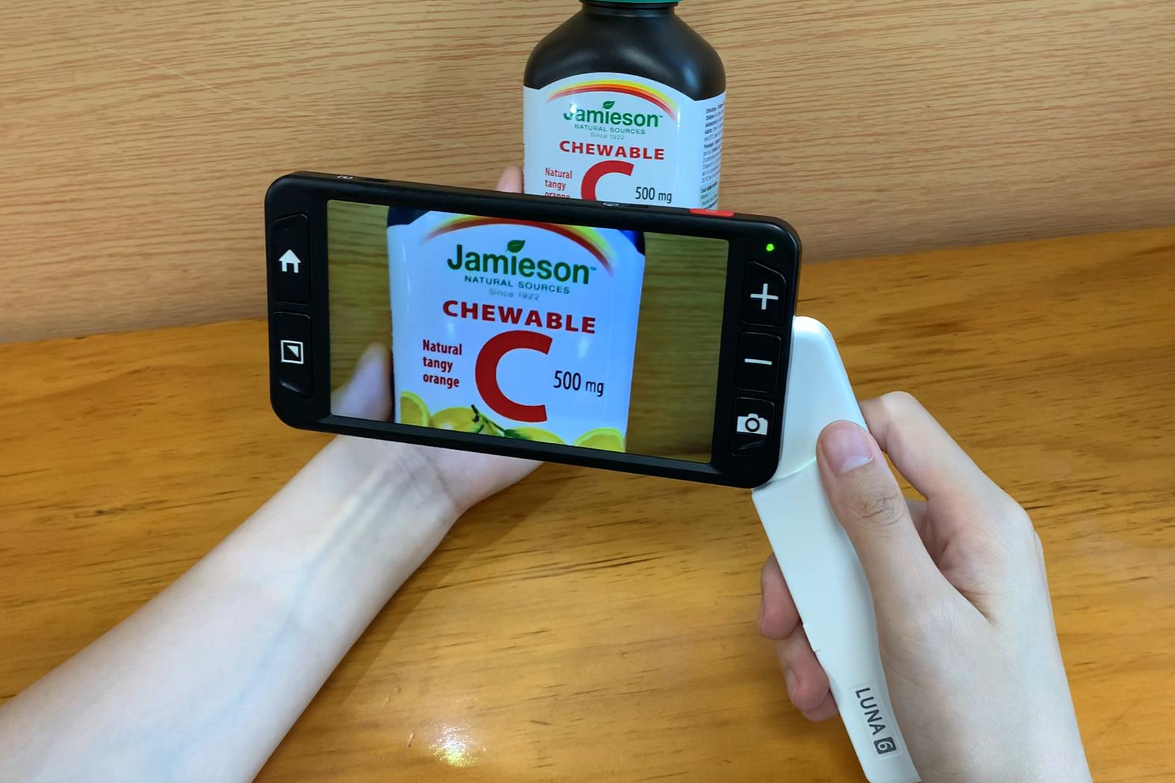

Whether you need to read a recipe or check cooking times, the convenience of having a lightweight, portable magnifier at your fingertips enhances independence and confidence in the kitchen. The Luna 6 and Luna S models are particularly handy, allowing users to zoom in on fine print or details with ease, making the cooking process smoother and more accessible.
The use of these tools helps reduce the complexity of cooking, especially for individuals with visual impairments. Moreover, research shows that low-vision individuals who can independently perform daily tasks demonstrate higher life satisfaction, particularly when they can effectively utilize assistive technology (Singh & Patel, 2024).
Conclusion
Cooking can indeed be a challenge for low-vision individuals, but by employing some adaptation techniques, it is possible to enhance independence and safety in the kitchen. Whether it’s through using contrasting colors to increase visibility, leveraging tactile markers to adjust devices, or relying on audio assistive tools and smart assistants, these small changes can lead to significant improvements. We hope these cooking tips will make your time in the kitchen more enjoyable and confident!
According to the latest data from the World Health Organization, approximately 1.1 billion people globally are affected by low vision, underscoring the importance of finding effective daily living adaptation strategies (World Health Organization, 2023). Low vision does not mean losing control over one’s life; with reasonable adaptations and innovative technologies, cooking can become a source of joy and self-expression. Try integrating these tips into your daily cooking routine, and you may find that many kitchen challenges are indeed surmountable!
Call to Action: Strengthen Family Bonds through Cooking
If you have elderly family members with low vision, try to spend more time cooking with them and enjoying meals together. Sharing these moments will help them feel your love and companionship. For families with visually impaired children, consider involving them in cooking activities to teach them self-care skills. Cooking with them not only promotes independence but also helps them find joy in everyday routines.
FAQs:
How to cook with low vision?
A: Cooking with low vision can be made easier by using high-contrast colors for visibility, tactile markers on stove controls, and smart devices like Alexa or Google Home to set timers and read recipes aloud. Zoomax Luna magnifiers also help you read recipe books or ingredient labels clearly.
What kitchen tools are best for low vision?
A: The best kitchen tools for low vision include tactile markers for knobs, large-font labels for spices, and cut-resistant gloves for safe food preparation. Smart devices like Alexa can help set reminders, and electronic magnifiers like Zoomax Luna are essential for reading fine print on packaging.
How can smart devices help with low vision cooking?
A: Smart devices like Amazon Alexa or Google Home can help with setting timers, reading recipes aloud, and even playing step-by-step cooking tutorials via voice commands. They make it easier to navigate the kitchen without relying on sight.
How can I improve safety in the kitchen if I have low vision?
A: Improving kitchen safety with low vision involves using high-contrast cutting boards, tactile markers for stove and oven knobs, and organizing your kitchen to keep essential tools within easy reach. Smart speakers can also set reminders, reducing the risk of forgetting cooking steps.
What is Zoomax Luna, and how can it help in the kitchen?
A: Zoomax Luna 6 and Luna S are electronic magnifiers that allow you to zoom in on text, making it easier to read recipes, labels, and cooking instructions. These portable devices are perfect for low-vision individuals who want to cook more independently.
References:
- Kim, Y., & Lee, S. (2024). Evaluating the effectiveness of assistive technologies for visually impaired individuals in daily activities. International Journal of Assistive Technology Research, 18(1), 45-55. https://doi.org/10.1016/j.ijatr.2024.01.005
- Martinez, R., & Brown, T. (2023). High-contrast colors and their impact on visually impaired individuals’ kitchen activities. Journal of Visual Impairment & Accessibility, 127(2), 100-109. https://doi.org/10.1177/0145482X231089654
- Singh, A., & Patel, N. (2024). The role of assistive technologies in enhancing mental well-being among visually impaired individuals. Disability and Health Journal, 17(1), 120-130. https://doi.org/10.1016/j.dhjo.2024.02.012
- World Health Organization. (2023). World report on vision – updated 2023. Retrieved from https://www.who.int/publications/i/item/9789241516570

